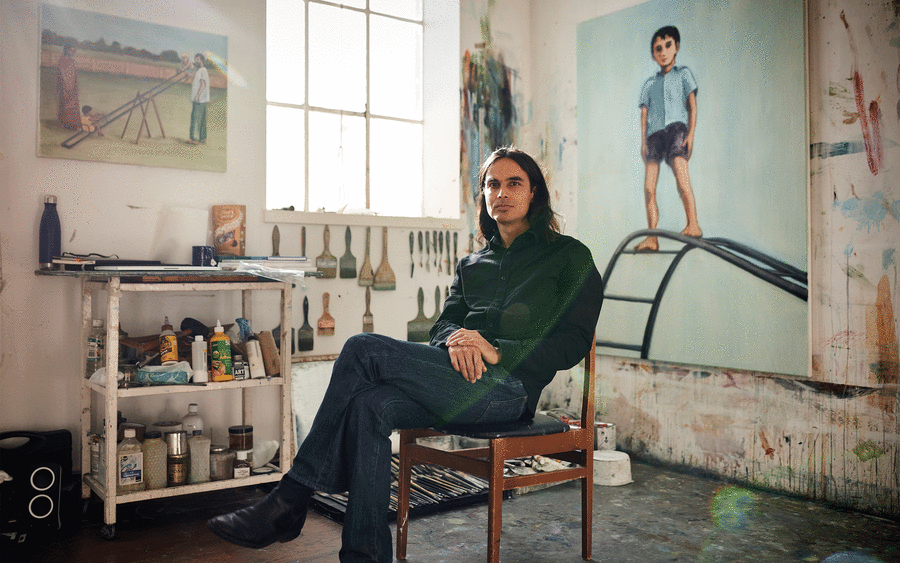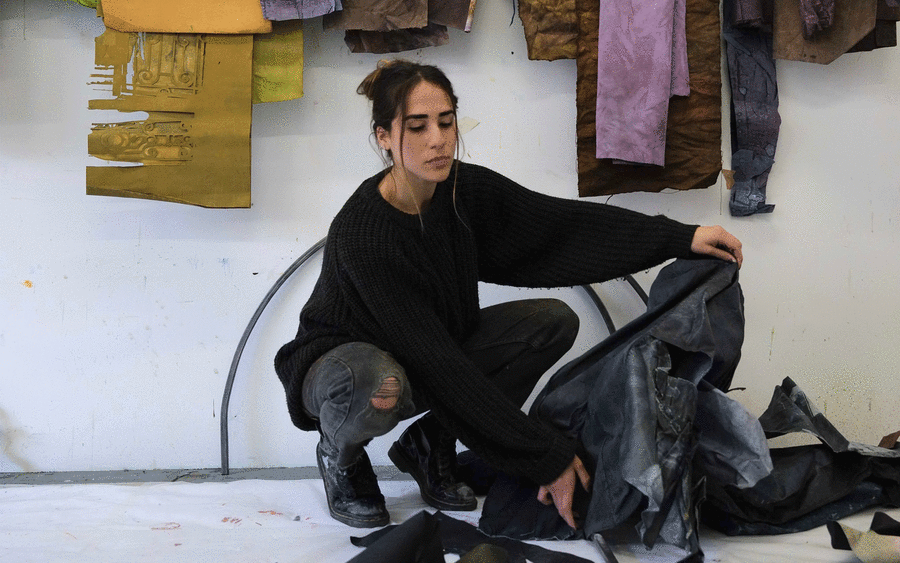‘Art has always been my escape – from a life, a society, and relationships in which I felt out of place. As a child, I was introverted, rather effeminate, and I struggled to find companionship. Drawing filled this gap early on. It was the foundation on which I could connect with others, a shield from bullies, a means of self-expression, and, above all, a way to feel accomplished and gifted at something. Looking back, even if I didn’t have the know-how, I realize I never imagined myself being anything other than an artist.
‘I’m Sudanese, but I grew up in Mecca, where I never felt at home. After returning to Sudan, I soon had to leave again. I arrived in Norway in 2008; I was 20, and the first thing I did was to look for art schools. Three years later, I was admitted to the Oslo National Academy of the Arts. It was a drastic departure from everything I knew. Academia challenged me to step out of my comfort zone. It gave me the means to experiment with my abilities, offering me the chance to try out different techniques and it covered the costs of some of my biggest works like Thawr, Thawra (2014).
‘Until then, my perception of art had been intimate and personal, but I was interested in communicating my ideas on a larger scale. As I realized that I could use my practice to bring about the changes I wanted, I became aware of my place in society and my attachment to and pride in my origins. Being away from home leads you to develop a different relationship with your past and yourself. A lot has happened in Sudan in recent years, and I’ve seen our identity – whose diversity inspires me greatly – diluted and our culture devalued.
‘I fear for our traditions. I created Talitin (The Third) (2023) – the work I presented at the Venice Biennale – with this in mind. This piece reclaimed the Sudanese bridal dance, a tradition that has nearly vanished due to growing shame and male possessiveness. It is traditionally performed by the bride as a culmination of week-long wedding celebrations. The last dance I attended was in 1998, when I was 10 years old.
‘Talitin is a work very dear to my heart; I get goosebumps just thinking about it. I’ve always been fascinated by this dance and longed to experience it myself. Still, when I reached puberty, I was no longer allowed to participate as it became a women-only domain. Finding a woman open-minded enough to teach me was challenging, but I’m a communicator. I was committed to doing whatever it takes, even travelling to Egypt, to prepare myself for it. Sharing this part of my culture and identity on such a prestigious platform as the Venice Biennale was incredibly powerful. Exhibiting in Venice had always been a dream of mine. Few Sudanese artists have made their mark internationally; I was the second to be invited to the Venice Biennale, following one of my favorite artists, Ibrahim El-Salahi, and the first to be invited to the Biennale of Sydney in 2020.
‘I feel a duty to succeed, not only as a pioneering artist but also as a gay Sudanese. There are still very few of us who are open about our sexuality; I’m possibly the first. Coming out online in 2015 was both liberating and a responsibility. Afterwards, I initiated a project inspired by a Sudanese local saying, called Carrying the Face of Ugliness (2018). Through this photo series, I used my body to be the face of the Sudanese LGBTQ+ community, whose members often hide for safety yet contemplate their future. It’s a weighty task, but I see it as my mission to offer a judgment-free space for people to explore their identity. I want to ensure that no one else feels as isolated as I did as a teenager. They should know that someone who resembles them has thrived and that it’s possible for them too. It’s crucial to ignite progress.
‘As a gay Sudanese artist, I want to break down stereotypes as clearly and ambitiously as possible, so I often gravitate towards occupying large spaces. Recently, I encountered a massive textile piece by Magdalena Abakanowicz, and I thought, “this is incredible.” I’m drawn to large sculptures that invite immersion, and I aspire to create similar experiences. The spaces where my show “Glowing Phalanges” at Bergen Kunsthall and Kunstnernes Hus took place were huge, and I felt compelled to cover every inch of it. This concept extends to my upcoming installation at Art Basel, which will contain 15 unique pieces – an addition to my previous works of 33, and 99 prayer beads. My ultimate goal is to create 1,000 sculptural pieces, referencing the longest strings of prayer beads used in Sudanese Sufism.
‘In this exploration of my religious upbringing, I contrast conflicting Muslim cultures, juxtaposing my family’s Sufi spirituality against the backdrop of Wahhabism in Saudi Arabia. I imbue objects I source in Norway but that come from abroad with personal narratives, reclaiming their significance. Once souvenirs or fashion items, animal skins, plants, and figurines become vessels for a renewed meaning. I’m creating a spiritual shrine characterized by its inherent inclusivity.’
Ahmed Umar is represented by OSL contemporary (Oslo). His work will be on view in the Statements sector at Art Basel in Basel.
Tifenn Durand is an art enthusiast and a master’s student at Sciences Po, currently based in Paris. She is a regular collaborator of Art Basel’s Editorial team.
Caption for top image: Ahmed Umar, Taitlin The Third (still), 2024. Filmed by Jacob H Svensen. Courtesy of the artist and OSL contemporary.
Published on June 4, 2024.


